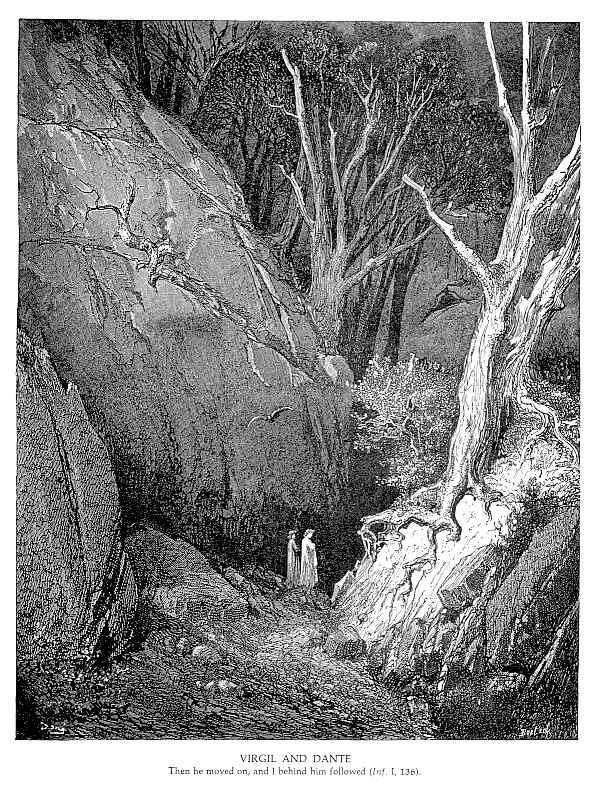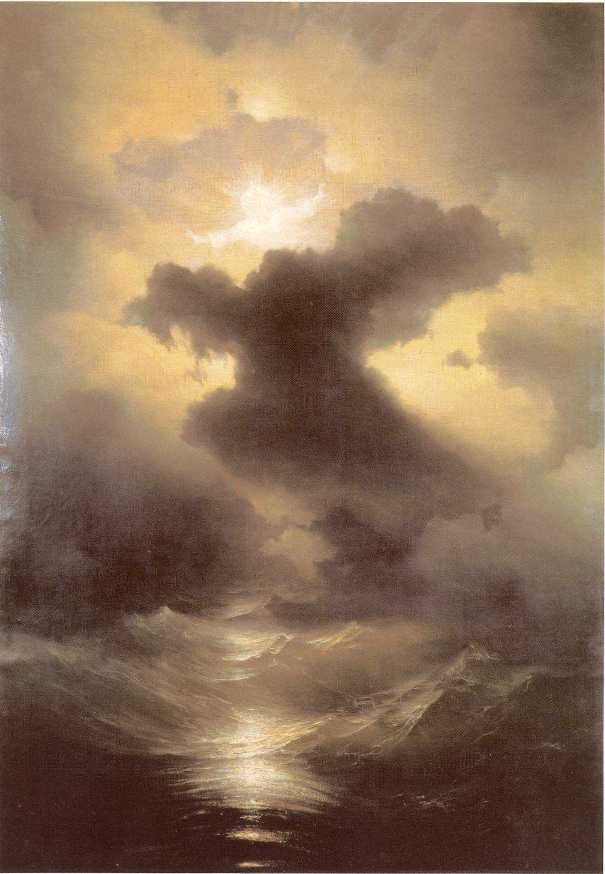『아비달마구사석론』
K0953
T1559
아비달마구사석론 제10권/전체22권
● 한글대장경 해당부분 열람I
● 한글대장경 해당부분 열람II
○ 통합대장경 사이트 안내
○ 해제[있는경우]
● TTS 음성듣기 안내
※ 이하 부분은 위 대장경 부분에 대해
참조자료를 붙여 자유롭게 연구하는 내용을 적는 공간입니다.
대장경 열람은 위 부분을 참조해주십시오.
● 자료출처 불교학술원 기금 후원안내페이지
『아비달마구사석론』
♣0953-010♧
5
♥아래는 현재 작성 및 정리 중인 미완성 상태의 글입니다♥
[페이지 내용 업데이트 관련 안내]
❋본문
◎[개별논의]
○ [pt op tr]
[#M_▶더보기|◀접기|

○ 2019_1106_153800_nik_fix

○ 2019_1105_124543_can_CT28

○ 2020_0904_140449_nik_AB7

○ 2020_0905_114415_can_CT33

○ 2020_0910_114155_can_BW28

○ 2020_0930_142619_can_AR6

○ 2020_1002_123046_nik_AB7

○ 2020_1017_144108_nik_ct22

○ 2020_1017_160440_can_ar43_s12

○ 2018_1022_174443_nik_Ab15

○ 2018_1022_180040_nik_BW22

○ 2018_1024_173131_nik_CT28

○ 2018_1023_125014_can_ar24

○ 2020_1114_125731_can_bw4_s12

○ 2020_1114_132550_nik_ct9_s12

○ 2019_1104_102018_nik_bw0_s12
● [pt op tr] fr
_M#]

○ 2020_1114_141905_can_CT33_s12
❋❋본문 ♥ ◎[개별논의]
★%★
『아비달마구사석론』
♣0953-010♧
![]()
◎◎[개별논의] ♥ ❋본문
★1★
◆vtpz1221
| ◈Lab value 불기2568/09/30 |
|
○ [pt op tr] 예술작품 사진 공양, 나무불, 나무법, 나무승 ivan-aivazovsky-chaos-the-creation-1841
♥saint-paul-capesterre-saint-kitts-saint-kitts-and-nevis
Marc Orgeret - A La Bastoche (1978)
♥단상♥ |
|
문서정보 ori https://buddhism0077.blogspot.com/2024/09/2568-09-30-k0953-010.html#1221 sfed--아비달마구사석론_K0953_T1559.txt ☞아비달마구사석론 제10권/전체22권 sfd8--불교단상_2568_09.txt ☞◆vtpz1221 불기2568-09-30 θθ |
■ 선물 퀴즈
방문자선물 안내페이지
다음에 해당하는 단어를
본 페이지
에 댓글로 적어주시면 됩니다.
권하여 청한다는 뜻. 지극한 정성으로 부처님께 설법해 주기를 원하는 것.
답 후보
● 권청(勸請)
극미(極味)
근본무명(根本無明)
근사남(近事男)
근책율의(勤策律儀)
금강동자(金剛童子)
금강수(金剛樹)
ॐ मणि पद्मे हूँ
○ [pt op tr]
[#M_▶더보기|◀접기|
■ 음악
Les Blaireaux - L'auto-Stoppeur
Arthur H - Avanti!
Serge Reggiani - La Longue Attente
Claude Dubois - Bonjour Petite
Volo - La Finale
Avec Elle - Avec Elle
Mireille Mathieu - Padam, Padam
■ 시사, 퀴즈, 유머
뉴스
퀴즈
퀴즈2
유머
■ 한자 파자 넌센스 퀴즈
040▲ 卯卬戊民半 ■ 묘앙무민반 40 ( 토끼 묘 /넷째 지지 묘 )( 나, 자신( 自身) 앙 / 위풍당당( 威風堂堂)한 모양 앙) ( 다섯째)천간( 天干) 무 / 무성하다( 茂盛--) 무 )( 백성 민 / 잠잘 면 )( 반 반 )
014▲ 卂也广兀幺 ■ 신야엄올요 14ㅡ 빨리 날라가니 집들이 우뚝하지만 작게 보인다. ( 빨리 날 신 )( 잇기 야/ 어조사 야, 대야 이/이것 이 )( 집 엄 / 넓을 광, 암자 암 )( 우뚝할 올 )( 작을 요 ) 재춘법한자
【 】 ⇄✙➠
일본어글자-발음
중국어글자-발음
■ 영어단어 넌센스퀴즈- 예문 자신상황에 맞게 바꿔 짧은글짓기
■ 번역퀴즈
번역
번역연습(기계적 번역내용 오류수정 연습)
■ 영-중-일-범-팔-불어 관련-퀴즈
[wiki-bud] Ancestor worship
[san-chn] pravartanatā 生, 能轉, 障礙, 隨
[san-eng] kāryakartā $ 범어 worker, active participant in an organisation
[pali-chn] adhisīla 增戒學
[pal-eng] yaacayoga $ 팔리어 adj.accessible to begging; ready to comply with another's request.
[Eng-Ch-Eng] 句身 (pada-ka^ya). One of the twenty-four elemental constructs not concomitant with mind in Yoga^ca^ra theory. The gathering of two or more phrases.
[Muller-jpn-Eng] 動則有苦 ドウソクウク once there is movement, there is suffering
[Glossary_of_Buddhism-Eng] SANGHA☞
Syn: Order (Buddhist); Community of Monks and Nuns.
See also: Bald-headed Thief; Bhiksu; Bhiksuni; Good Spiritual
Advisors; Sangha (Admonition to); Sixfold Respect.
“Buddhist order or community of at least [four] monks.”
Dait: 340
“The third of the Three Jewels of Buddhism (the Buddha, the
Teaching, and the Community). Sometimes narrowly defined as the
community of mendicants.”
Thur: 144
“The monastic order founded by the Buddha, the members of which
are called Bhikkhus (males) or Bhikkhunis (females). It is the oldest
monastic order in the world. The act of admission to the order is
called renouncing the world. The hair of the head and beard is shaved,
the yellow robe (consisting of the three garments) is donned, and the
Tisarana is recited. The candidate is then a novice. The ordination
ceremony takes place before a chapter of senior Bhikkhus and Theras.
No oaths are taken, and the Bhikkhu is free to leave the Order at
any time if he desires to do so. The Bhikkhu possesses only his robes,
alms-bowl, razor, needle and water-strainer.”
Hump: 167
“In ancient India the most distinctive feature of the Buddhist Sangha
was probably its adoption of a compromise between the settled
life-style of many orthodox Brahmans and the wandering characteristic of other traditions. By establishing fixed residences for three
months in the rainy season, the Buddha ensured that the life of the
bhikkhu would provide both for the establishing of local centres of
operation and for the retention of at least something of the simplicity
necessitated by the life of the wandering religious mendicant (beggar).
Larger settled institutions tended to develop later, but great individual
mobility usually remains possible. This kind of inherent compromise
is natural to the Buddhist ‘middle way’ and quite characteristic of the
training rules of the Pratimoksa. A similar balance is clearly expected
between the demands of discipline and a relaxed approach, as well as
between respect for seniority and individual autonomy. Authority is
collective rather than hierarchical, but a certain mininum observation
is enforced. Only a breach of any one of four rules leads to expulsion
(parajika, i.e. ‘defeat’): sexual intercourse; taking human life; theft; or
a dishonest claim to some spiritual attainment. The majority of the
lesser rules are concerned either with ensuring simplicity of life-style
or with maintaining a disciplined deportment. The Pratimoksa can
be approached fairly laxly and each bhikkhu is in principle free to
leave the Sangha if he wishes. Yet taken with a full commitment, it
represents a most demanding training, requiring great attention and
awareness in every action – especially for the inexperienced. Such
of course is its purpose. It is part of the spiritual training directed
towards the Buddhist goal.”
Hinn: 286
“The great contribution which the Buddhist Order makes to the life
of [East Asians] consists in keeping before the minds and imaginations of the people the fact of religion, the reality of the spiritual life.
Doubtless this great function of keeping the lamp of religion alight is
[sometimes not well] performed by the Buddhist clergy. But as things
actually are in [East Asia] today, and have been for many a century,
the clergy, are the torch-bearers of religion, and if they should drop
their light, it might well be extinguished in the darkness of worldly,
unspiritual preoccupation. It is not without value in the life of
[East Asians] that they should be constantly reminded of the fact of
Buddhism, reminded of it as at least an unfailing potentiality. It is not
without value that an Order of men and women should be consecrated
to the lifelong study and service of religion, that buildings of ancient
beauty should be devoted to the praises of the highest ideal that [East
Asia] knows, that quiet cloisters should be set aside for meditation
of holy men and of all who wish to meditate. It is not without value
that the poorest beggar, the busiest politician, the saddest woman, the
most guilty sinner should carry ever in the subconscious regions of
their minds the thought that, if they will, they may go any morning
or any night to a nearby temple, hear the solemn music of gong and
drum and the chanting of monks, watch the smoke of incense ascend
before the image of the Blessed One, and catch some intimation of
a higher life, a loftier world, a deeper peace than they had known
before.” (J. B. Pratt, The Pilgrimage of Buddhism: 1928.)
“A monk’s real life is the life of the mind. However vividly one describes
and illustrates the monastic setting – the architecture, the ceremonial, the externals of preaching and meditation, the daily sights and
sounds of the Sangha – one is still leaving out the most vital ingredient: thought. Perhaps as close as we can come to the essence of
Buddhism in a visual image is the face of a monk in meditation [or
recitation]…”
Bech: 116 #0135
See also next entry.
[fra-eng] magnat $ 불어 magnate
[chn_eng_soothil] 倶空 Both or all empty, or unreal, i.e. both ego and things have no reality.
[vajracchedikā prajñāpāramitā sūtraṁ] ▼●[羅什] 如來說一切諸相, 卽是非相, 又說一切衆生, 卽非衆生.
여래는 온갖 모양다리가 곧 모양이 아니라 하며, 또는 온갖 중생이 곧 중생
이 아니라 하느니라.
[玄奘] 何以故? 善現, 諸有情想即是非想; 一切有情, 如來即說為非有情.
[義淨] 此眾生想即為非想; 彼諸眾生即非眾生. 何以故? 諸佛如來離諸想故.
14-17 तत्कस्य हेतोः ? या चैषा सुभूते सत्त्वसंज्ञा, सैव असंज्ञा।
य एवं ते सर्वसत्त्वास्तथागतेन भाषितास्त एव असत्त्वाः।
tatkasya hetoḥ | yā caiṣā subhūte sattvasaṁjñā saiva asaṁjñā | ya evaṁ te
sarvasattvāstathāgatena bhāṣitāste eva asattvāḥ |
그것은 어떤 이유인가? 수보리여! 그 ‘중생에 대한 산냐’, 그것은 산냐가 아니기
때문이며,˚ 그렇게오신분에 의해 말해진 그들 ‘모든 중생들’, 그들은 오직 중생이 아니기
때문이다.˚
▼▷[tatkasya] ① tat(pn.ƿ.nom.) + kasya(pn.ƾ.gen.) → [그것은、 어떤]
▼[hetoḥ] ① hetoḥ(ƾ.gen.) → [이유인가?]
▼▷[yā] ① yā(pn.Ʒ.nom.) → [그리고、 (어떠한) 그것은]
▼[caiṣā] ① ca(ƺ.) + eṣā(pn.Ʒ.nom.) → [그]
▼[subhūte] ① subhūte(ƾ.voc.) → [수보리여!]
▼[sattvasaṁjñā] ① sattva+saṁjñā(Ʒ.nom.) → [중생에 대한 산냐는]
▼[saiva] ① sā(Ʒ.nom.) + eva(ƺ.) → [그것은、 오직]
▼[asaṁjñā] ① asaṁjñā(Ʒ.nom.) → [산냐가 아니다. → 산냐가 아니기 때문이다.]
▼▷[ya] ① ye(pn.ƾ.nom.pl.) → [(어떠한) 그들]
▼[evaṁ] ① evaṁ(ƺ.) → [이와 같이]
▼[te] ① te(pn.ƾ.nom.pl.) → [그들은]
▼[sarvasattvāstathāgatena] ① sarva+sattvāḥ(ƾ.nom.pl.) + tathāgatena(ƾ.ins.) → [모든
중생들은、 그렇게오신분에 의해]
▼[bhāṣitāste] ① bhāṣitāḥ(nj.→ƾ.nom.pl.) + te(pn.ƾ.nom.pl.) → [말해진、 그들은]
② bhāṣita(p.p. spoken, said, uttered)
▼[eva] ① eva(ƺ.) → [오직]
▼[asattvāḥ] ① a|sattvāḥ(ƾ.nom.pl.) → [중생이 아니다. → ~ 아니기 때문이다.]
출처 봉선사_범어연구소_현진스님_금강경_범어강의
『능단금강반야바라밀다경』(能斷金剛般若波羅密多經) - 범어 텍스트 vajracchedikā prajñāpāramitā sūtraṁ
♣K0116-001♧
♣K0117-001♧
■ 삼매_게송퀴즈
■ 오늘의 게송
[274일째]
일일제불어신상 $ 016▲阿婆羅阿婆羅為 一 ● 多婆(上)羅, ○□□□□,現,於,現,不
□□□□□□□, 現不可說諸毛孔,
於彼一一毛孔中, 現眾色相不可說。
□□□□□□□, 현불가설제모공,
어피일일모공중, 현중색상불가설。
一一諸佛於身上,
저러한 부처님의 낱낱 몸 위에
말할 수 없이 많은 털구멍 있고
저러한 하나하나 털구멍 속에
나타내는 여러 몸매 말할 수 없네.
[275째]
불가언설제모공 $ 017▲多婆羅多婆羅為 一 ● 界分, ○□□□□,咸,於,悉,於
□□□□□□□, 咸放光明不可說,
於彼一一光明中, 悉現蓮華不可說。
□□□□□□□, 함방광명불가설,
어피일일광명중, 실현련화불가설。
不可言說諸毛孔,
말할 수 없이 많은 털구멍마다
광명을 놓는 것도 말할 수 없고
그러한 하나하나 광명 가운데
나타나는 연꽃도 말할 수 없어
●K0954_T1560.txt★ ∴≪A아비달마구사론본송≫_≪K0954≫_≪T1560≫
●K0953_T1559.txt★ ∴≪A아비달마구사석론≫_≪K0953≫_≪T1559≫
●K0952_T1545.txt★ ∴≪A아비달마대비바사론≫_≪K0952≫_≪T1545≫
■ 암산퀴즈
833* 309
614676 / 724
■ 다라니퀴즈
구족수화길상광명대기명주총지 14 번째는?
불정광취실달다반달라비밀가타미묘장구(佛頂光聚悉怛多般怛羅秘密伽陁微妙章句) 90 번대 10개 다라니는?
부처님 108 명호 58 번째는?
14 지혜라고 하는 재보(財寶)를 보시하도록 증장시키며,
우파섬마참포, 鄔波睒摩讖蒱<十四>
upasama ksam bhu,
평온(平穩)지장,
『대승대집지장십륜경』
♣0057-001♧
090 아기니 ◐阿祁尼<火九十>◑agni
091 오다가라니 ◐烏陁迦囉尼<水九十一>◑udakaㆍuttarani//
092 아바 라시다구라 ◐阿波<引>囉視多具囉<苻能勝嚴九十二>◑Aparājitāㆍgura
093 마하바라젼나 ◐摩訶跋囉戰拏<大力嗔怒九十三>◑mahāㆍbalaㆍcaṇḍa
094 마하뎨다 ◐摩訶提哆<火天九十四>◑mahāㆍdīpta
095 마하뎨자 ◐摩訶帝闍<大滅九十五>◑mahāㆍteja
096 마하세미 다 ◐摩訶稅尾<二合>多<太白><九十六>◑mahāㆍśveta
097 지바 라 ◐什伐<二合>囉<光焰九十七>◑jvala
098 마하바라 ◐摩訶跋囉<大力九十><八>◑mahāㆍbala
099 반다라바시니 ◐半茶囉嚩<引>悉你<白拂九十九>◑pāṇḍaraㆍvāsinl.
●10방 여래께서는
이 주문의 비밀심인을 따라
10방에서 선지식(善知識)을 섬기며,
다니거나 머물거나 앉거나 누울 때도
마음대로 공양하시므로,
항하의 모래처럼 많은 여래께서는
모임 가운데서 큰 법왕자로 추천하신다.
불정광취실달다반달라비밀가타미묘장구(佛頂光聚悉怛多般怛羅秘密伽陁微妙章句) - 『대불정여래밀인수증요의제보살만행수능엄경』
♣K0426-007♧
058
상서로운 상호(相好)를 원만하게 갖추신 이께 귀의합니다.
南無圓滿吉祥相
『불일백팔명찬』佛一百八名讚
♣1183-001♧
257397
849
법수_암기방안
17 알통 [바이셉쓰biceps ]
9 맹장 【맹장】
14 맥박~점(맥박뛰는곳) pulse
58 (이)비 鼻孔 【비공】 콧구멍
16 겨드랑이 [암핏 armpit]
74 무명지 (~약지 )
■ 오늘의 경전 [이야기, 게송,선시 등]
■요가자세 익히기
요가_삼각 자세

○ 2019_0113_125304_can_BW17

○ 2019_0113_130254_nik_CT33_s12

○ 2019_0113_131235_nik_ct8_s12

○ 2019_0113_133130_nik_CT28

○ 2019_0113_141527_nik_Ab31

○ 2019_0113_155758_can_ct19

○ 2019_0731_191812_can_AB7_s12

○ 2019_0801_080821_can_bw4_s12

○ 2019_0801_080900_can_CT27

○ 2019_0801_080941_can_bw4_s12

○ 2019_0801_094850_nik_ar24

○ 2019_0801_101300_nik_Ab35

○ 2019_0801_102606_nik_ct13

○ 2019_0801_104451_nik_AB7_s12

○ 2020_1125_134104_can_AB4_s12

○ 2020_1125_140915_can_ar28

○ 2020_1125_142922_can_CT33_s12

○ 2020_1125_150915_can_AR25
● [pt op tr] fr
_M#]

○ 2020_1125_152048_can_AB4_s12
™善現智福 키워드 연결 페이지
https://buddhism0077.blogspot.com/2020/06/keyword.html
○ [pt op tr]
● 아비달마구사석론_K0953_T1559 [문서정보]- 일일단상키워드
[#M_▶더보기|◀접기|
[관련키워드]
아비달마구사석론 제10권/전체22권
■ 본 페이지 ID 정보
불기2568-09-30_아비달마구사석론-K0953-010
https://buddhism0077.blogspot.com/2024/09/2568-09-30-k0953-010.html
sfed--아비달마구사석론_K0953_T1559.txt ☞아비달마구사석론 제10권/전체22권
sfd8--불교단상_2568_09.txt ☞◆vtpz1221
불기2568-09-30
https://blog.naver.com/thebest007/223602512410
https://buddhism007.tistory.com/463131
htmback--불기2568-09-30_아비달마구사석론_K0953_T1559-tis.htm
● [pt op tr] fr
_M#]



